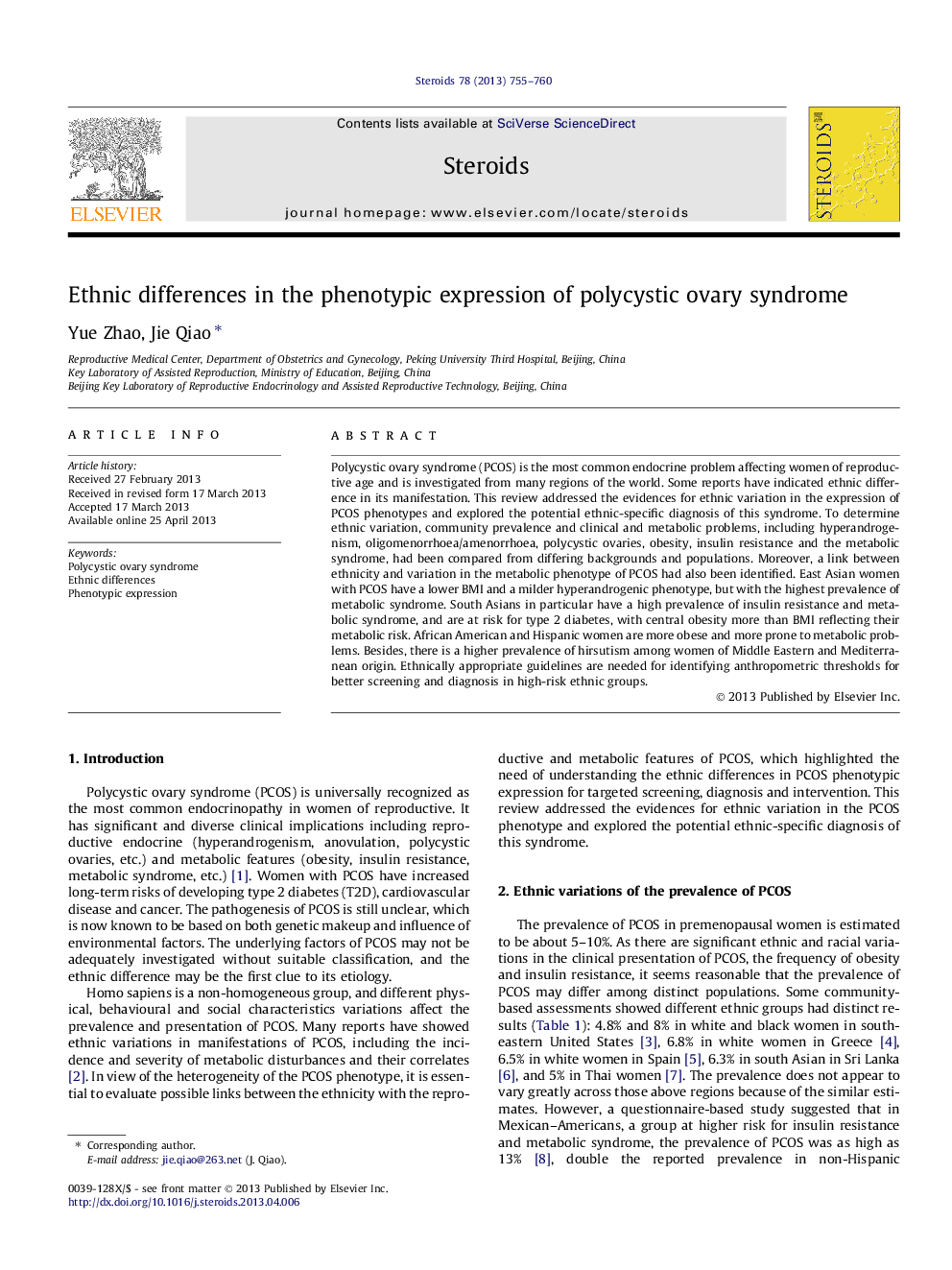| Article ID | Journal | Published Year | Pages | File Type |
|---|---|---|---|---|
| 2027869 | Steroids | 2013 | 6 Pages |
•The difference of PCOS prevalence depends on the diagnostic criteria and ethnicity.•The clinical and metabolic phenotypes of PCOS vary depending on the ethnicity.•Ethnic-specific guidelines are needed for better screening and diagnosis of PCOS.
Polycystic ovary syndrome (PCOS) is the most common endocrine problem affecting women of reproductive age and is investigated from many regions of the world. Some reports have indicated ethnic difference in its manifestation. This review addressed the evidences for ethnic variation in the expression of PCOS phenotypes and explored the potential ethnic-specific diagnosis of this syndrome. To determine ethnic variation, community prevalence and clinical and metabolic problems, including hyperandrogenism, oligomenorrhoea/amenorrhoea, polycystic ovaries, obesity, insulin resistance and the metabolic syndrome, had been compared from differing backgrounds and populations. Moreover, a link between ethnicity and variation in the metabolic phenotype of PCOS had also been identified. East Asian women with PCOS have a lower BMI and a milder hyperandrogenic phenotype, but with the highest prevalence of metabolic syndrome. South Asians in particular have a high prevalence of insulin resistance and metabolic syndrome, and are at risk for type 2 diabetes, with central obesity more than BMI reflecting their metabolic risk. African American and Hispanic women are more obese and more prone to metabolic problems. Besides, there is a higher prevalence of hirsutism among women of Middle Eastern and Mediterranean origin. Ethnically appropriate guidelines are needed for identifying anthropometric thresholds for better screening and diagnosis in high-risk ethnic groups.
